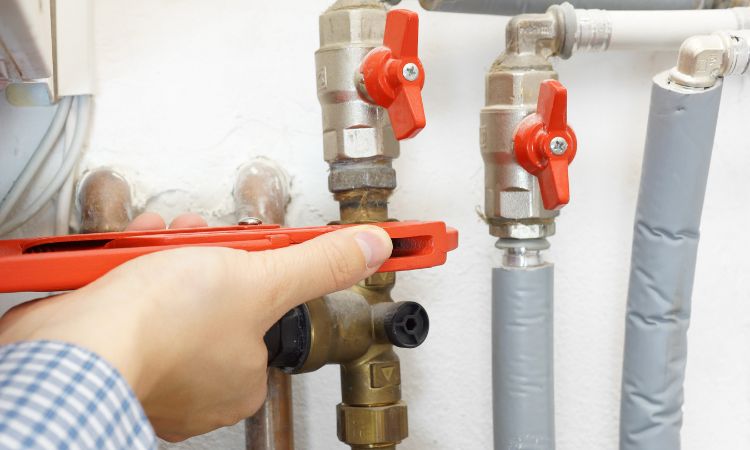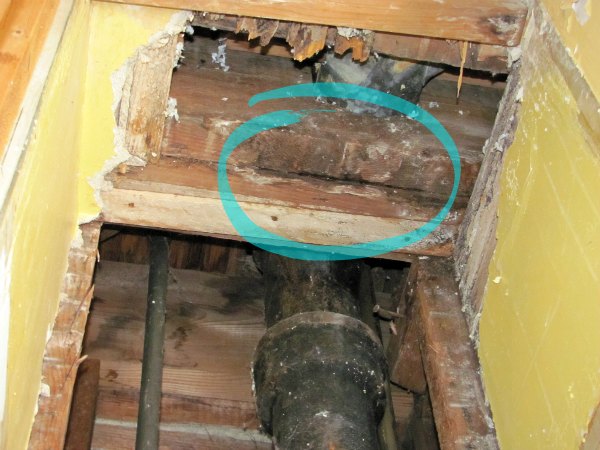Effective Techniques to Resolve Plumbing Issues in Older Homes
Effective Techniques to Resolve Plumbing Issues in Older Homes
Blog Article
How do you really feel when it comes to Common Plumbing Challenges In Old Buildings?

Older homes typically come with charm, character, and background, but they can also bring a host of pipes concerns. Whether you're dealing with maturing pipes, low water pressure, or leaks, knowing just how to deal with these typical problems is crucial to preserving a risk-free and functional home. In this overview, we'll check out the common plumbing obstacles encountered by older homes and give useful options to keep your pipes in top form.
Recognizing Common Plumbing Problems
Aging Pipes
One of one of the most usual problems in older homes is maturing pipes. Relying on the era in which your home was constructed, the pipes might be made from products that have deteriorated over time, such as galvanized steel, cast iron, or perhaps lead. These products can rust, become brittle, or develop leaks, causing water damage and prospective carcinogen.
Water Top Quality Testing
Older pipelines can influence the high quality of your water. Conduct a water high quality test to look for contaminants such as lead, corrosion, or various other impurities that may be presented by aging pipelines.
Solutions for Common Pipes Concerns
Replacing Aging Pipelines
If your home has old, weakening pipelines, consider changing them with contemporary materials like copper or PEX. This can be a substantial financial investment, but it will certainly stop future issues and boost the security and reliability of your pipes system.
Dealing With Low Water Stress
To repair low water pressure, begin by cleansing or changing old fixtures and getting rid of mineral buildup in the pipelines. If the trouble continues, it might be required to replace areas of corroded pipes.
Fixing and Replacing Leaking Pipes
For little leaks, you can use pipeline clamps or epoxy putty as a short-term fix. However, it's finest to replace dripping pipes entirely to stay clear of further damages.
Upgrading Components
Upgrading old components to modern, water-efficient versions can enhance your home's plumbing performance and lower water consumption. Look for components with the WaterSense label for the very best effectiveness.
Managing Pipe Deterioration
If your pipelines are rusted, replacing them with corrosion-resistant products like copper, PVC, or PEX is the very best option. Normal examinations and water top quality maintenance can aid protect against additionally rust.
Low Water Pressure
If you're experiencing low tide pressure, maybe because of natural resources, corrosion inside the pipelines, or old components that are no longer working successfully. This can be a major hassle, especially in locations like showers and sinks.
Dripping Pipes
Leaks are an additional regular problem in older homes, usually brought on by rusty or worn-out pipelines. Also small leaks can cause considerable water damages, mold growth, and boosted water bills if not resolved promptly.
Out-of-date Fixtures
Out-of-date pipes components such as faucets, commodes, and showerheads not just look old yet may likewise be much less reliable, vulnerable to leakages, or incompatible with modern pipes requirements.
Pipeline Deterioration
Corrosion is a typical trouble in older pipelines, especially those made from galvanized steel or actors iron. Corroded pipelines can limit water circulation, create staining, and ultimately lead to leakages or pipe ruptureds.
Evaluating the Condition of Your Pipes
Inspecting Visible Pipelines
Beginning by examining any noticeable pipes in your home, such as those in basements, crawl spaces, or under sinks. Seek signs of corrosion, leakages, or rust, which can suggest underlying problems.
Looking for Leakages
Look for leakages by inspecting areas around faucets, bathrooms, and under sinks. You can likewise check your water meter before and after a period of no water utilize to detect hidden leakages.
When to Call a Specialist
While some pipes concerns can be managed with do it yourself options, there are times when it's ideal to hire an expert. If you're taking care of significant leaks, comprehensive deterioration, or are unsure regarding the problem of your pipes, a qualified plumbing can provide experienced evaluation and fixing.
Preventive Upkeep Tips
Regular Inspections
Routinely inspect your plumbing system for signs of damage. Catching concerns early can prevent costly repairs down the line.
Water Stress Regulation
Guarantee your water pressure is within the recommended array to prevent worrying your pipelines and components. A plumber can install a pressure regulatory authority if required.
Water Quality Maintenance
Mount water filters or conditioners if your water top quality is poor. This can protect your pipelines and fixtures from damage caused by difficult water or impurities.
Positive Pipeline Replacement
If your home has older pipelines, take into consideration positive replacement prior to major problems emerge. This can save you from emergency repairs and water damage.
Conclusion
Taking care of pipes concerns in older homes requires a combination of caution, precautionary upkeep, and prompt upgrades. By understanding the common difficulties and recognizing when to look for professional aid, you can ensure your plumbing system continues to be practical and trusted for years to find.
7 Common Plumbing Issues in Older Homes
Read More Plumbing Articles
Whether you're mulling over purchasing your dream period property, or you already own one, being aware of common plumbing problems in old homes can help you avoid expensive mishaps.
Many plumbing problems in old homes are similar to those faced in newer properties, but some are more prevalent in houses over a certain age. If you've recently bought an old house or haven't had your aging plumbing system inspected in a while, it's worth keeping an eye out for the following issues:
Bad Pipe Materials
Depending on the age of your home, the pipe materials used in your plumbing system may not comply with modern building codes and could be unsafe.
Lead pipes are the most dangerous type of old plumbing pipes. This metal was once used extensively for manufacturing water pipes because it's easy to shape and has a long lifespan. Plumbers also used it to solder joints between pipes made from other materials. However, lead can cause serious health problems, particularly in children. Drinking water from pipes containing lead can lead to lead poisoning symptoms, such as stomach pain and fatigue, so it's essential to replace them if you discover them in your home.
Outdated Fixtures
Even if the previous owners installed high-quality fixtures, these won't be immune to the effects of age and wear and tear. Over time, fixtures can corrode and wear down, increasing the likelihood of leaks and clogs.
Sometimes, an outdated fixture can be a minor irritation that makes using your plumbing system less convenient. However, it's best to maintain older plumbing components carefully and replace them when they show signs of failure to avoid a major leak and water damage.
Corroded or Leaking Pipes
Corroded pipes are a common plumbing issue in old homes. Corrosive substances in the water supply can gradually break down the metal used to make the pipes, eventually causing leaks. Corrosion can also cause sediment to build up, increasing the chances of a clogged pipe. All these issues take time to develop, making them more likely in old house plumbing.
Drain Problems
Older home drainage systems were often installed before the arrival of appliances such as garbage disposals, so they're frequently incapable of handling modern household usage. The result could be frequent clogs or water backing up into sinks and other fixtures.
A failing sewer line is the most serious drainage issue commonly encountered in old houses. This problem is more likely if you've remodeled your home to add more fixtures, placing more pressure on a sewer line not designed for the purpose. Eventually, the line can become clogged, causing unpleasant indoor smells, poor drainage and contaminated wastewater backing up into your fixtures.
Pipe Bellies
Pipe bellies develop when pipes buried in your home's foundation start sagging as the building settles. They create downward slopes, affecting water drainage and increasing the risk of significant blockages. You don't need to worry about pipe bellies in a pressurized main line, as the water pressure prevents the pipes from clogging, but they can cause issues in drain lines.
Root Intrusion
Root intrusion occurs when trees and other shrubs grow roots too close to your sewer line or water service line. Sometimes, the roots penetrate the pipe walls, leading to leaks and soft or wet areas in your yard.
Unfortunately, root intrusion is a more common plumbing problem in old homes. That's because older houses are more likely to have pipe bellies allowing standing water to accumulate, attracting roots to the moist conditions.
https://www.elocal.com/resources/home-improvement/plumbing/faq/plumbing-issues-in-older-homes/

I'm certainly very involved in Plumbing Problems In Old Homes and I really hope you appreciated the blog entry. Loved our piece? Please share it. Help others find it. Many thanks for your time. Don't hesitate to visit our blog back soon.
Book Now Report this page